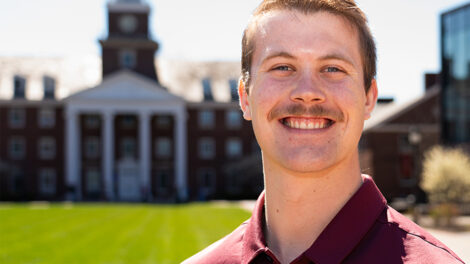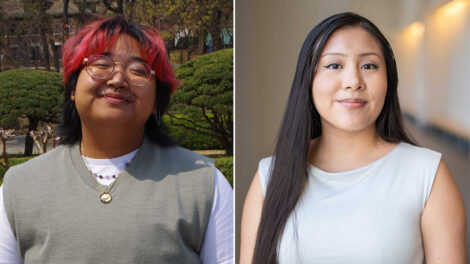Meet our new faculty: Anastasia Thévenin

Anastasia Thévenin, chemistry | Photo by Rick Smith
My research focuses on: Protein-to-protein interactions in healthy and diseased cellular contexts. Proteins are macromolecules that do all sorts of important jobs in our cells by bumping into, interacting with, and modifying other molecules. I am interested in understanding molecular mechanisms that drive such interactions in healthy cells, as well as perturb interactions, causing disease. Undergraduate researchers in my lab utilize a protein called connexin 43 (Cx43)—it functions as a building block of gap junctions—cellular pores that help cells communicate by allowing small molecules and ions to flow between cells. Perturbed gap junction function has been shown to lead to many diseases, such as cancer, cardiovascular disease, cataracts, bone development, and deafness.
Cx43 has a large number of protein partners with which it must interact for proper cell-to-cell communication. Many interactions between Cx43 and its partners are regulated by a type of chemical modification called phosphorylation. We have recently identified phosphorylation events on Cx43 that help it function as a tumor suppressor. Our goal is to develop versions of Cx43 to potentially control cancer progression. We use many biochemical and cellular approaches to study Cx43 and its binding partners in their purified form, as well as directly in living cells.
This fall, I am teaching: CHEM 351: Survey of Biochemistry and CHEM 108: General Chemistry II. Survey of Biochemistry is typically taken by biology, neuroscience, chemistry, and engineering majors and provides an introduction into all big topics in biochemistry: structure and function of biological molecules (proteins, lipids, nucleic acids, and carbohydrates), enzymes, bioenergetics, and cellular metabolism. CHEM 108 is the second part of our first-year chemistry sequence and is typically taken by many science majors, such as chemistry, biochemistry, biology, neuroscience, and chemical engineering.
What students can expect from me: I love teaching undergraduates, and especially teaching them in biochemistry. It is such a “put it together” course, and I enjoy seeing how so many chemistry and biology topics converge and click for my students as they learn their biochemical relevance. I strive to create an inclusive, engaging, and fun learning environment in my classroom. And I never miss an opportunity to share a fun science history anecdote (translation: go off on a tangent). I am excited to teach CHEM 108, where students are first introduced to many chemical concepts so relevant in biochemistry: thermodynamics, kinetics, acids and bases, and many others.
While my expectations are high, I want my students to know they should never hesitate to ask questions and seek my help. My favorite part of the job is helping students learn, and I can’t help if you don’t ask questions in and out of the classroom.
Getting to know me: I was a biochemistry faculty member at Moravian University for nine years before starting this position. Prior to Moravian, I was a visiting professor of biology … here at Lafayette! It has felt wonderful being back on campus, seeing familiar faces, and setting up my new lab in the Chemistry Department. I was born in Tashkent, Uzbekistan, and moved to the United States as a refugee when I was in high school. My husband is French, and we met back in graduate school at University of Delaware. He is a biochemistry professor at Lehigh University. The two of us are looking forward to bringing our sons to Lafayette-Lehigh football games in the future!

